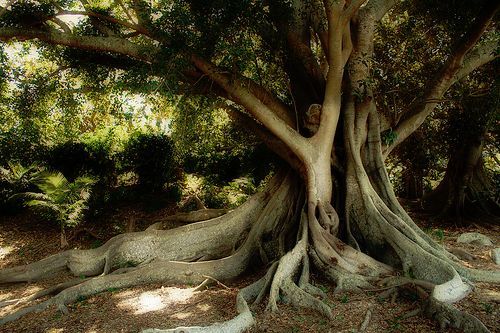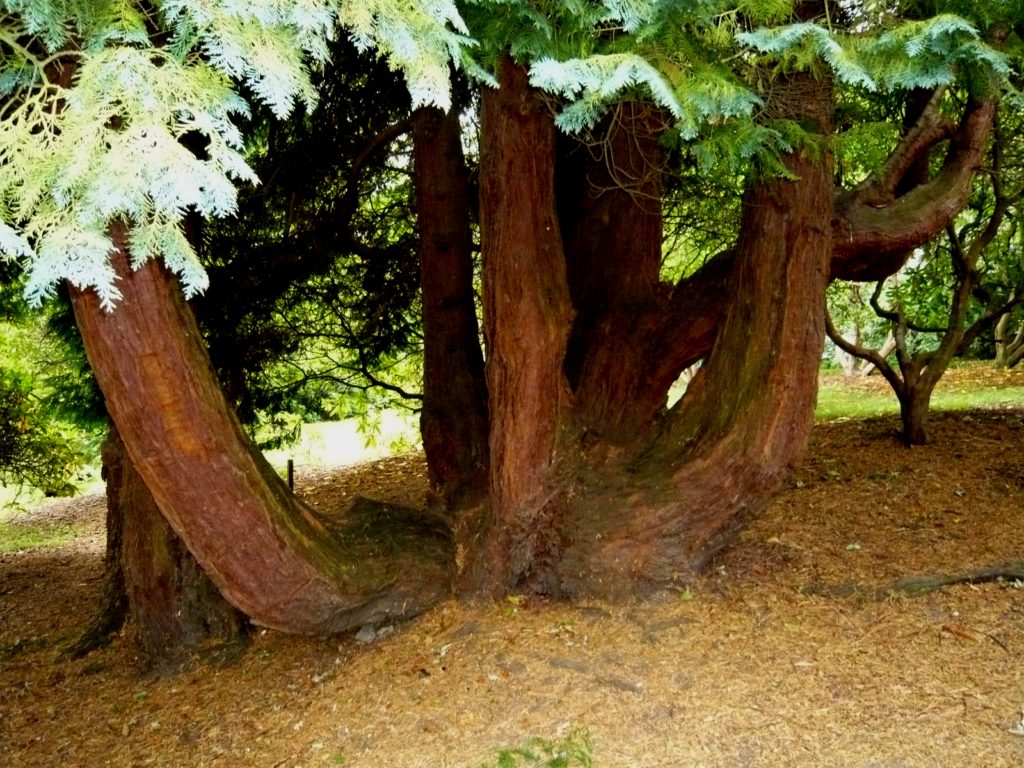Trees Near Buildings
The UK is experiencing a significant drought following a very wet spring. Trees were encouraged to put on extra foliage and they are now regretting the extra moisture they need to transpire. This is leading to more cracks in the surface soil and could lead to permanent damage.
Trees take up large volumes of water during summer. Shrinking and swelling of clay soils can be a concern but trees 30 feet from buildings should not be a major concern. However it is wise to avoid large vigorous and thirsty trees like Oak, Poplar and Willow.

Root Damage
- Main roots are usually confined to the top 3 feet of soil
- Shrubs and climbers are seldom implicated in root damage.
- Swelling trunks close to buildings may squeeze against structures.
- Root size and extent is variable dependant on species.They seldom penetrate well maintained drains but vulnerable drains should be repaired.
- Roots radiate irregularly seeking moisture and nutrient. They may spread two to three times the height of the tree.
Subsidence & Structural Damage
- Older buildings with shallow foundations are more vulnerable.
- Soils other than shrinkable clay do not swell and contract as much as other soil and seldom cause damage.
- The side of a building nearest the tree can settle due to its weight in dry soil causing cracked masonry, distorted doors and windows.
- Fences, hedges and boundary walls may be damaged by proximity.
- Paths can be lifted by robust roots.
- Wind damage to trees may make them structurally unsafe.
General Tree Issues
- A tree is the responsibility of the landowner who may be liable for any damage it causes.
- Check with the local planning authority to establish if a tree has a ‘Tree Preservation Order’. They should also know if the garden is in a designated conservation order whose objective is to conserve landscape and public spaces in an area.
- Trees have atendency to grow larger than you originally intended. They can block out light through your windows, shade gardens and over hang into your neighbors garden.
- If you need to remove a large tree be aware that the large volume of water it previously transpired will remain in the ground and may lift the water table, swell the soil and cause ‘heave’ or displacement.
- Gutters and roofs may suffer from leaf litter.
- Surface roots and suckers can be invasive.

Further Tree Safety Tips
- Think about the future life and nature of your tree before planting or starting work. It pays to plan ahead.
- If a large tree needs pruning, lopping or taking down use a tree surgeon who has full insurance.
- Consider neighbors and overhangs across roads and public paths.